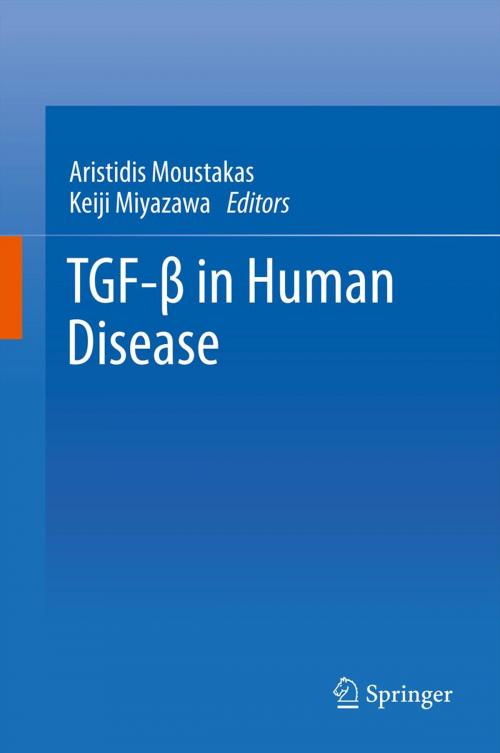TGF-β in Human Disease
Nonfiction, Science & Nature, Science, Other Sciences, Molecular Biology, Biological Sciences, Biochemistry| Author: | ISBN: | 9784431544098 | |
| Publisher: | Springer Japan | Publication: | June 18, 2013 |
| Imprint: | Springer | Language: | English |
| Author: | |
| ISBN: | 9784431544098 |
| Publisher: | Springer Japan |
| Publication: | June 18, 2013 |
| Imprint: | Springer |
| Language: | English |
Transforming growth factor-β (TGF-β) is a secreted polypeptide with multifunctional properties manifested during embryonic development, adult organ physiology, and pathobiology of major diseases, including cancer and fibrotic and cardiovascular diseases. The signaling pathway of TGF-β now is rather well understood. Continuing revelations in the mechanisms of action of TGF-β provide specific mechanistic examples of how human cells lose their controlled function and behave wrongly during the development of diverse diseases. Equally important, however, is the current promise of exploiting the TGF-β pathway in combating human disease. This book comprehensively covers major areas of human disease where the involvement of TGF-β is firmly established. Simultaneously, the book highlights major gaps in knowledge and the future directions of research that can benefit human medical science. The core set of diseases where TGF-β action is well documented and are included in the book are cancer and cardiovascular and fibrotic disorders. The central aim of the book is to stimulate young scientists to enter the prolific TGF-β field and find new solutions to the problems remaining in this area of study. For this purpose the book provides authoritative educational chapters that furnish a good introduction to the field for young doctoral students, postdocs, and clinical fellows. The book also serves as a valuable reference for the aficionados in the field, who can find accessible and well-illustrated material for their teaching and lecturing activities, via which the importance of TGF-β biology is disseminated to the world of science and to the public.
Transforming growth factor-β (TGF-β) is a secreted polypeptide with multifunctional properties manifested during embryonic development, adult organ physiology, and pathobiology of major diseases, including cancer and fibrotic and cardiovascular diseases. The signaling pathway of TGF-β now is rather well understood. Continuing revelations in the mechanisms of action of TGF-β provide specific mechanistic examples of how human cells lose their controlled function and behave wrongly during the development of diverse diseases. Equally important, however, is the current promise of exploiting the TGF-β pathway in combating human disease. This book comprehensively covers major areas of human disease where the involvement of TGF-β is firmly established. Simultaneously, the book highlights major gaps in knowledge and the future directions of research that can benefit human medical science. The core set of diseases where TGF-β action is well documented and are included in the book are cancer and cardiovascular and fibrotic disorders. The central aim of the book is to stimulate young scientists to enter the prolific TGF-β field and find new solutions to the problems remaining in this area of study. For this purpose the book provides authoritative educational chapters that furnish a good introduction to the field for young doctoral students, postdocs, and clinical fellows. The book also serves as a valuable reference for the aficionados in the field, who can find accessible and well-illustrated material for their teaching and lecturing activities, via which the importance of TGF-β biology is disseminated to the world of science and to the public.















